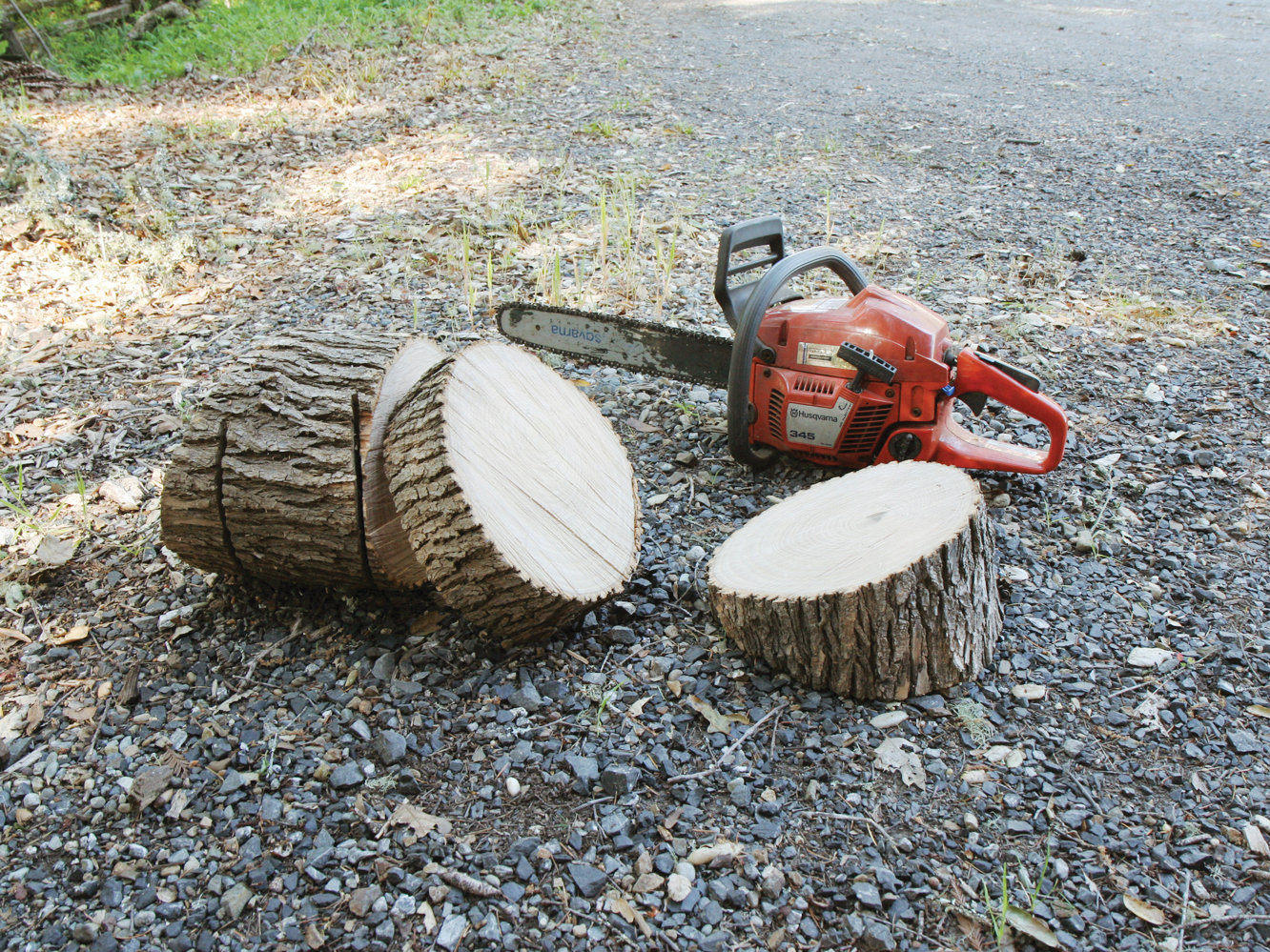For the top of the table, you’ll want a cross-section of a larger tree, about 10″ to 12″ in diameter. Once again, an arborist is your best bet. Just have them cut a few cross-sections of a tree trunk. Ask them to cut 2″ to 3″ slabs and to make them as even as possible. In this case, it will be difficult to find dry wood. So just go with “green” hardwood. I recommend maple, oak, or walnut.
Depending on the type of tree and time of year, the bark may or may not peel easily. For this project, I peeled the bark off the base and left it on the top. Any way works, so it’s up to you.
Before you move on with the project, inspect your base and top for any signs of insect damage or rot. Numerous neat holes in the surface of the wood are indicative of insect infestation. So are fine dust or granules. If either of these conditions exist, go back and pick a new base. You don’t want to inadvertently introduce wood-eating beasties into your home.
Finally, it’s highly likely that the cross-section for your top will form, or already has, radiating cracks. The outer rings of the cross-section are less dense than the center rings. As the wood dries, the amount of shrinkage is greater in the less dense areas. This is normal and, in my opinion, adds character.
As an alternative to rough wood, some Asian restaurant supply stores offer cutting boards that are simply sections of tree trunks. One of these will make a fine top for the side table.
You can find some at http://wokshop.com, in with the cleavers and knives.

















